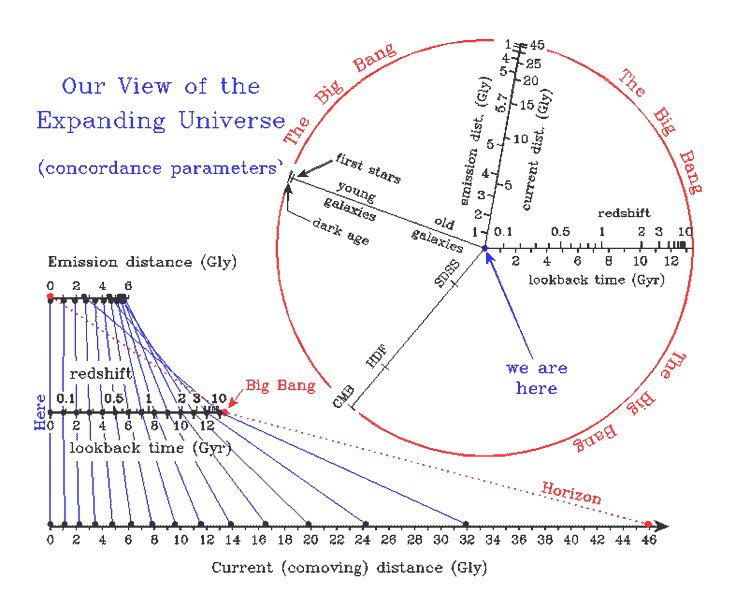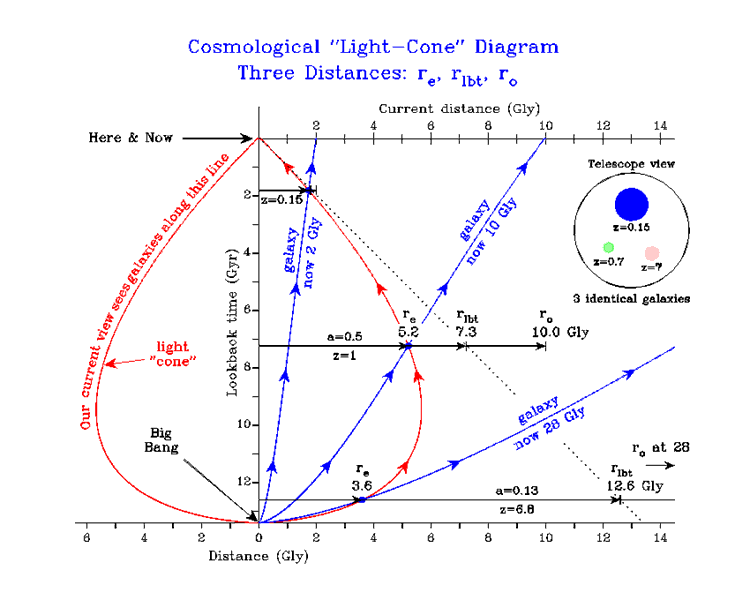
Different presentation of the three principle distances:
Current distance: r(to); Emission distance: r(te); light travel distance: r(lbt)

Yet another presentation of the three principle distances:
Current distance: r(to); Emission distance: r(te); light travel distance: r(lbt)
Note the simple depiction of the appearance of three identical galaxies at redshifts 0.15, 0.7, 6.8. Their angular size is determined by re and hence gets bigger at great distances. But the surface brighness goes way down because not only is the area larger, but the flux scales with the inverse square of ro (and a further (1+z)-2 factor for time dilation and redshift -- see secton 8d).
Figures made for this website.